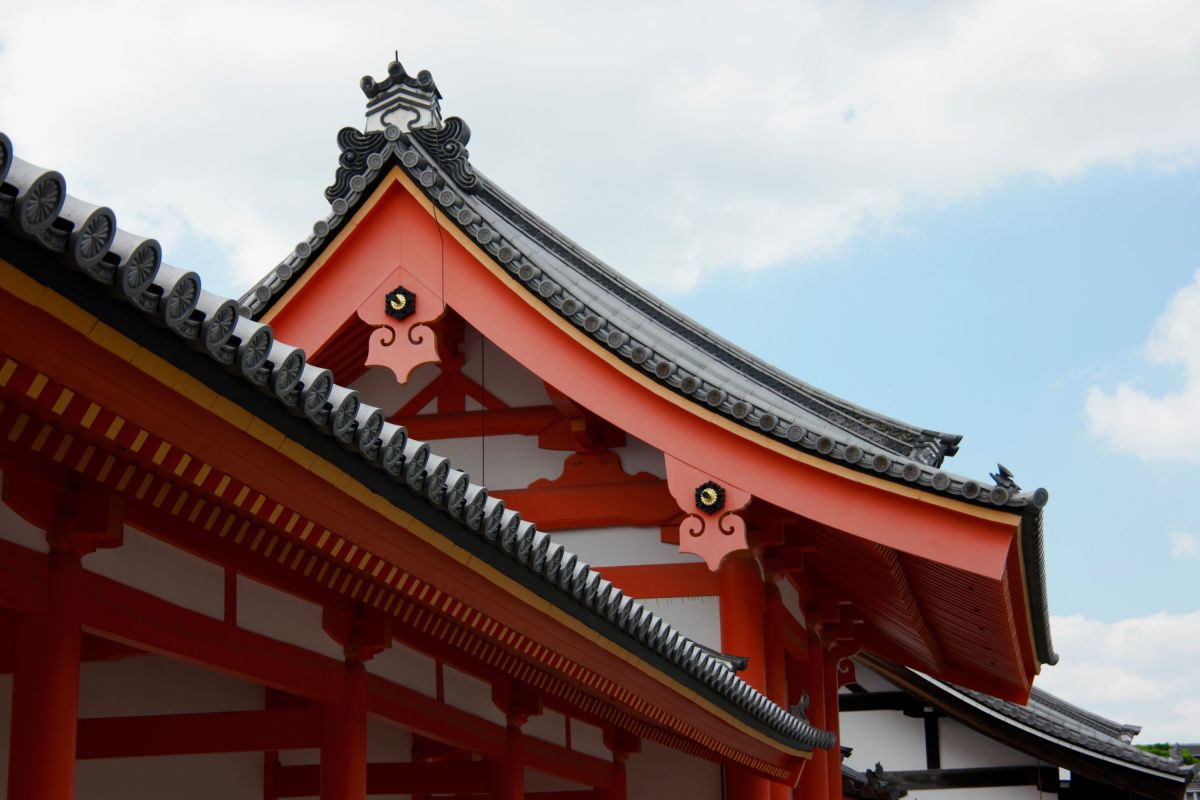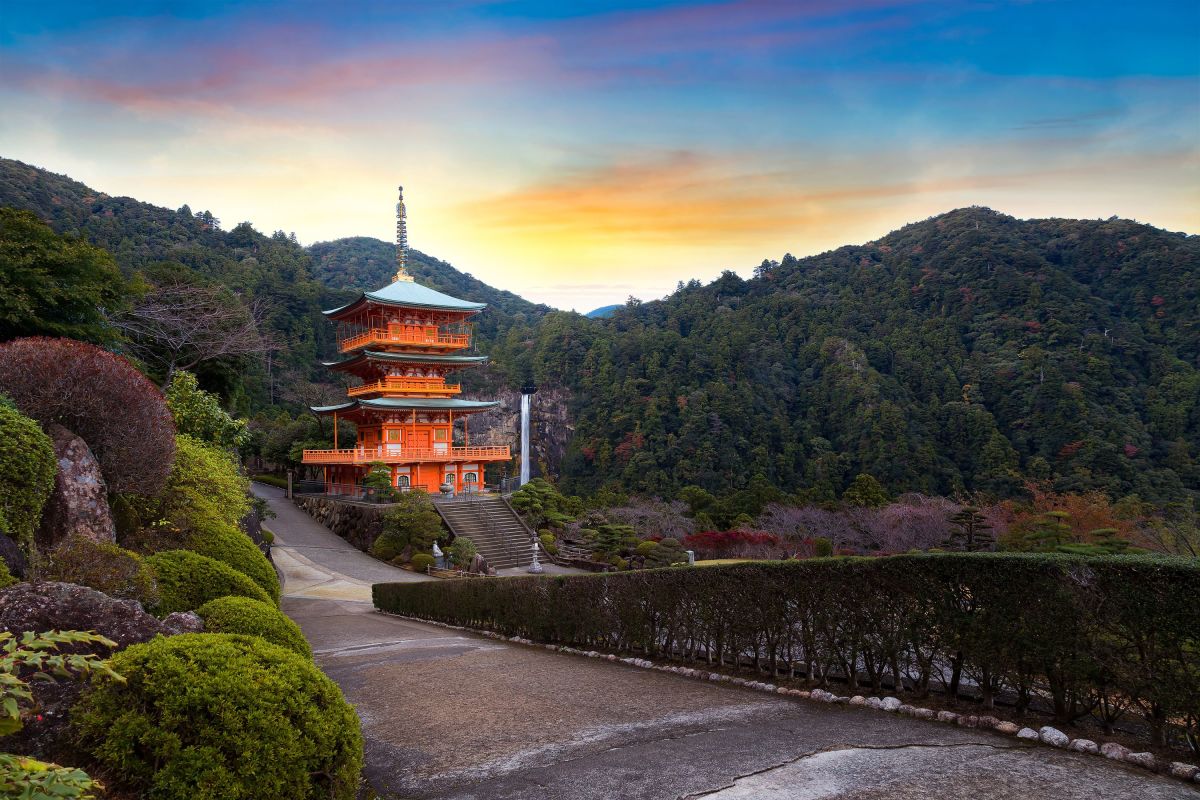
Japanese Religion & Philosophies
Travel can be a moving and powerful personal experience that touches us deeply, stirring feelings of transcendence and meaning. This is especially so when we travel with genuine curiosity and empathy for the core values of the culture we are visiting, as opposed to just going to have fun, buy trinkets and snap photos for social media! Of course, spirituality and religion are central to so many cultures around the world, and Japan seems to exemplify this as much as anywhere.
Japan’s fascinating blend of futurism and heritage draws tens of millions of travelers to its cities, coast and countryside every year, and everywhere you look are its national religious traditions. With majestic temples and robe-clad monks being a common sight even in the metropolis of Tokyo, a sense of spirituality and religion in Japan is ever-present.
What is the Main Religion of Japan?
But what, you may be wondering, is the main religion in Japan? There are several relevant responses to this question that address the Japanese main religions, and also share some insight regarding religion in general.
While Japan is a country that measures very low in terms of relevance of “religion” to daily life in polls, close to 90% of Japan’s residents consider themselves to be part of the major belief systems of Buddhism, Shinto, or Shinbutsu-sh?g?. But before we get any further into the religions of Japan, let’s look at some concepts that will help us understand religious traditions in general.

Broadly speaking, religions are sometimes classified using three categories:
- Folk Religion: few formal organizations, written scriptures, or centralized leadership, and often traces to ancient indigenous practices
- Organized Religion : usually has the mentioned formal organizations, written scriptures and centralized leadership
- Syncretic Religion: a blend of folk and organized religion often created informally and subtly where organized religions have been established
- The Three Universal Truths
- The Four Nobel Truths
- The Five Precepts
- The Eightfold Path
- Meditation and Mindfulness
Japan has religious activitiy representatives of each of these categories. Shinto is a folk religion, like Haiti’s Vudon (don’t believe the ghost stories - it’s a fascinating tradition!), while Buddhism is an organized religion that could be compared to Christianity or Islam. Shinbutsu-sh?g? is a major syncretic religion in Japan that blends Shinto and Buddhism like Cuba’s Santeria blends African animism and Catholicism. Like the cities and countryside that attract travelers from around the world to celebrate their diversity, religions in Japan are equally rich in variety and complexity.
Syncretic religions are widespread around the world, especially in the Global South where much cultural tourism takes place, so it’s an important thing for travelers to know about! Often considered a Global North country by economic standards, Japan has many cultural characteristics of a Global South country when it comes to religion and spirituality. In the USA or Europe, with their predominant organized religions, much religious philosophy and activity is traceable to churches, mosques and synagogues, along with public religious figures. Learning about religion can be relatively straightforward in these settings! However, in many regions where folk and syncretic religion is strong, taking on some background study, initiating appropriate relationship building with the locals, and observing practices firsthand and experientially where appropriate can be more effective ways to learn.

The Backgrounds and Philosophies of Japanese Religion
In Japan, main religions are multifaceted in terms of historical source, paradigms and practice. Contemporary Buddhism blends traditions from its Hindu origins with its centuries of further development in South Asia. Hindu disciple Siddhartha Gautama achieved enlightenment, becoming the Buddha, after 49 motionless days meditating under the Bodhi tree ( the “sacred fig tree”, named Ficus religiosa by scientists in his honor) sometime between the 4th and 6th century BCE. Central tenets of Buddhism include:
Buddhism is both a personal, private practice of meditation and right living, as well as one of public devotion that takes place in temples by the reading and recitation of sacred texts through chanting, the presentation of offerings, and sometimes through adopting the ascetic lifestyle of monkhood or nunhood. It has found much popularity in the West, beginning in the 1960s and continuing today. The mindfulness movement’s having found particular traction, Buddhism’s identity as either a religion or philosophy is sometimes debated. However, by far the best way to learn about these complexities is to see them firsthand, with our Japan tours offering an prime setting for witnessing these beautiful traditions!
Buddhism came to Japan around the 6th century CE from Korea or China (reports vary by source), while Shinto developed over long term history in Japan within the ancient cultures of the Jomon, Satsumon, Okhostsk and Ainu peoples. One of Shinto’s main characteristics is the devotion to kami, forest spirits that can be likened to the faeries of European folklore and pagan spirituality. Shinto has made a subtle inroad to Western pop culture through Marie Kondo’s Netflix show “Tidying Up”, encouraging the arranging one’s possessions in such a way as to turn one’s home into “a sacred space, a power spot filled with pure energy.” Kondo worked as a Shinto miko, or priestess, for a number of years. Shinbutsu-sh?g? actually developed early on in the meeting of Buddhism and Shinto, blending the two for centuries before they were formally separated as two distinct belief systems in the 19th century. Japanese religions have been complex, complementary traditions that have intimately corresponded with one another and the lanscape of Japan for hundreds and thousands of years.
In Japan, religion is a part of everyday life. While there are small populations of Christian (less than 3%) and other major world religions, they are few compared to the rest of the population’s adherence to the main traditions of the country: over half claim Shinto or no religion, while over a third claim Buddhism. These numbers may make the huge numbers of temples and shrines seem odd, but it can also point to the possibility that the religion and spirituality of Japan being deeply personal and subtle. The dedicated traveler is invited to devote time and energy to learning more about these somewhat shy and humble traditions, making for an enriching and transformational journey when the time comes! Reach out to us to get started planning today.

